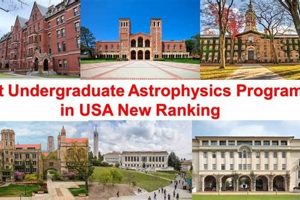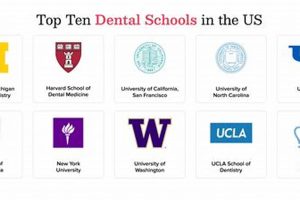Elite tennis academies offer comprehensive training programs designed to develop players of all skill levels, from aspiring juniors to seasoned professionals. These programs typically combine on-court coaching with physical conditioning, mental training, and strategic development. A typical academy might offer individualized instruction tailored to a player’s strengths and weaknesses, alongside match play opportunities and tournament preparation.
Access to high-quality coaching, specialized facilities, and a competitive training environment are key factors contributing to player development. Historically, renowned academies have served as crucial stepping stones for many successful players, providing the necessary resources and support to reach their full potential. This structured approach accelerates skill acquisition, fosters discipline, and cultivates the mental fortitude essential for success in competitive tennis.
This exploration will delve into various aspects of elite tennis training, including coaching methodologies, facility requirements, the role of sports science, and the pathway from junior development to professional circuits. Further discussion will cover key considerations for selecting the appropriate training environment and highlight examples of successful programs worldwide.
Tips for Selecting a Top-Tier Tennis Academy
Choosing the right training environment is crucial for maximizing player development. These tips offer guidance for navigating the selection process.
Tip 1: Evaluate Coaching Credentials: Thoroughly research the coaching staff’s experience, certifications, and playing backgrounds. Look for proven track records of developing successful players.
Tip 2: Assess Training Methodology: Inquire about the academy’s coaching philosophy and training methods. A personalized approach tailored to individual needs is essential for optimal progress.
Tip 3: Consider Facilities and Resources: Examine the quality of courts, fitness centers, and other training resources. Access to advanced equipment and technology can significantly enhance development.
Tip 4: Evaluate Player-to-Coach Ratio: A lower player-to-coach ratio allows for more individualized attention and feedback, fostering faster improvement.
Tip 5: Investigate Tournament Opportunities: Regular competitive play is crucial for gaining experience and assessing progress. Ensure the academy provides ample opportunities for competitive matches and tournaments.
Tip 6: Assess the Training Environment: A positive and supportive training environment is essential for player well-being and motivation. Consider the academy’s culture and the overall atmosphere.
Tip 7: Consider Location and Logistics: Proximity to home, travel arrangements, and accommodation options are important practical considerations.
Careful consideration of these factors can significantly influence long-term success by ensuring optimal training conditions and fostering a supportive learning environment.
By following these guidelines, aspiring players can make informed decisions, selecting training environments conducive to maximizing their potential and achieving their tennis goals. This leads to a discussion on the overall landscape of tennis academies and their impact on the sport.
1. Expert Coaching
High-caliber coaching forms the cornerstone of any reputable tennis academy. The expertise of the coaching staff significantly impacts player development, influencing technique, strategy, and overall performance. This section explores key facets of expert coaching within the context of top-tier tennis institutions.
- Technical Refinement
Expert coaches possess a deep understanding of biomechanics and stroke production. They provide individualized instruction to refine technique, optimizing efficiency, power, and consistency. This includes detailed analysis of grips, swing paths, and footwork, leading to significant improvements in shot accuracy and control. For example, a coach might use video analysis to identify subtle flaws in a player’s serve and provide targeted drills to correct them.
- Strategic Development
Beyond technical skills, expert coaches develop a player’s strategic acumen. They teach court positioning, shot selection, and pattern recognition. This strategic guidance equips players with the tactical tools to analyze opponents’ weaknesses and exploit opportunities during matches. Understanding game situations and adapting strategies accordingly is a hallmark of effective coaching. For instance, a coach might devise specific game plans for different playing surfaces or opponent styles.
- Mental Fortitude
Expert coaches recognize the importance of mental resilience in competitive tennis. They work with players to develop mental toughness, manage pressure, and maintain focus during crucial moments. Techniques like visualization, positive self-talk, and stress management are often integrated into training programs. A coach’s ability to instill confidence and composure under pressure can be a decisive factor in a player’s performance. For instance, using mindfulness techniques during practice and in preparation for critical tournaments.
- Personalized Approach
Recognizing individual learning styles and tailoring coaching methods accordingly is a hallmark of expert coaching. This personalized approach maximizes player development by addressing specific needs and goals. Some players may require more emphasis on technical drills, while others might benefit from strategic simulations or mental conditioning exercises. A coach’s ability to adapt their methods to suit individual player profiles is critical for optimal progress.
The interplay of these coaching elements contributes significantly to a tennis academy’s overall effectiveness. Expert coaching elevates player performance, fostering continuous improvement and paving the way for competitive success. The quality of coaching directly correlates with the quality of training, and subsequently, the potential for player advancement. Therefore, the presence of experienced and knowledgeable coaches distinguishes top-tier tennis academies from less effective programs.
2. Comprehensive Curriculum
A comprehensive curriculum distinguishes high-quality tennis academies from those offering limited training. It encompasses a broad range of elements essential for developing well-rounded players prepared for competitive success. This breadth and depth of training contribute significantly to an academy’s overall effectiveness.
- Technical Skill Development
Technical proficiency forms the foundation of successful tennis. A comprehensive curriculum addresses all aspects of stroke mechanics, including forehands, backhands, serves, volleys, and overheads. Detailed instruction, drills, and repetitive practice refine technique, promoting consistency, power, and control. For instance, academies might utilize ball-tracking technology to analyze spin rates and trajectory, providing data-driven feedback for technical improvement.
- Tactical and Strategic Training
Beyond technical skills, understanding match play dynamics is essential. A comprehensive curriculum incorporates tactical and strategic training, covering court positioning, shot selection, and pattern recognition. Players learn to analyze opponents’ weaknesses, exploit opportunities, and adapt their game plans based on match situations. This strategic development prepares them for the complexities of competitive play. Examples include analyzing professional matches to understand strategic patterns and simulating match scenarios during practice sessions.
- Physical Conditioning
Tennis demands high levels of physical fitness, including strength, speed, agility, and endurance. A comprehensive curriculum integrates a robust physical conditioning program tailored to the demands of the sport. This includes strength training, plyometrics, flexibility exercises, and cardiovascular conditioning. Optimized physical conditioning enhances on-court performance, minimizes injury risk, and promotes long-term athletic development. An example would be incorporating sport-specific exercises like lateral lunges and cone drills to improve agility and footwork.
- Mental Training
Mental fortitude plays a crucial role in tennis success. A comprehensive curriculum addresses the psychological aspects of the game, incorporating techniques like visualization, mindfulness, and stress management. Players learn to control emotions, maintain focus under pressure, and develop mental resilience. This mental training enhances performance by promoting composure, confidence, and consistent decision-making during competitive matches. An academy might offer workshops on mindfulness techniques or provide access to sports psychologists.
The integration of these elements into a comprehensive curriculum contributes significantly to player development. Academies offering a well-rounded approach to training produce more adaptable, resilient, and successful players. The comprehensiveness of the curriculum directly impacts player preparedness, enhancing their ability to excel in competitive environments. This holistic approach is a key differentiating factor between top-tier academies and less effective programs.
3. State-of-the-art Facilities
State-of-the-art facilities are integral to the success of high-performing tennis academies. A direct correlation exists between training environment quality and player development outcomes. Advanced facilities provide opportunities for enhanced training, leading to improved performance and a greater likelihood of competitive success. For instance, access to clay courts allows players to develop specific skills and adapt to varying playing surfaces. Similarly, indoor courts ensure consistent training schedules regardless of weather conditions. Modern fitness centers with specialized equipment enhance physical conditioning programs. These factors collectively contribute to a more effective training environment and positively influence player outcomes.
Beyond the core components of courts and fitness areas, technological integration further distinguishes top-tier facilities. Ball-tracking technology provides precise data on shot speed, spin rate, and trajectory, enabling data-driven analysis for technical refinement. Video analysis allows coaches and players to review performance in detail, identify areas for improvement, and track progress objectively. These technological advancements enhance coaching effectiveness and provide players with valuable insights into their game. The availability of such resources contributes significantly to the overall training experience and distinguishes high-performing academies.
Investing in state-of-the-art facilities demonstrates a commitment to player development and provides a competitive advantage. Access to advanced resources, such as specialized training equipment, recovery facilities (like ice baths and saunas), and sports science labs, enhances training effectiveness and optimizes player performance. These facilities support a holistic approach to player development, addressing physical, technical, and mental aspects of the game. The presence of such resources is a key indicator of a high-quality training environment and attracts aspiring players seeking optimal development opportunities. This investment in infrastructure contributes significantly to an academy’s reputation and its ability to produce successful athletes.
4. Competitive Atmosphere
A thriving competitive atmosphere distinguishes high-performing tennis academies. This environment fosters continuous improvement, cultivates mental toughness, and prepares players for the rigors of professional competition. The presence of a robust competitive structure is essential for maximizing player development and achieving long-term success.
- Regular Match Play
Frequent competitive matches are crucial for developing match play skills and assessing progress. Academies that prioritize regular match play, including inter-academy competitions, simulated tournament scenarios, and external tournament participation, provide invaluable opportunities for players to gain experience and refine their game under pressure. Exposure to diverse playing styles and competitive situations accelerates learning and builds confidence. For instance, an academy might organize weekly tournaments or facilitate participation in regional and national junior circuits.
- Training with High-Level Peers
Training alongside driven and skilled peers creates a stimulating environment conducive to improvement. The presence of other dedicated players fosters healthy competition, encourages mutual support, and elevates the overall training intensity. Players learn from observing and competing against each other, pushing themselves to reach higher levels of performance. An academy attracting talented players from diverse backgrounds creates a rich training environment that benefits all participants. This can be facilitated by evaluating player rankings during intake.
- Exposure to Professional Environments
Exposure to professional tennis environments provides invaluable insights and motivation. Academies that facilitate opportunities to observe professional tournaments, interact with professional players, or train at professional facilities expose players to the highest levels of the sport. This exposure inspires players, sets high standards, and provides a glimpse into the demands and rewards of a professional tennis career. For example, an academy could organize trips to ATP or WTA tournaments or invite professional players for guest coaching sessions.
- Performance Tracking and Evaluation
Systematic performance tracking and evaluation provide objective measures of progress and identify areas for improvement. Academies that utilize data analysis, match statistics, and regular performance reviews provide players with valuable feedback and guide training decisions. This data-driven approach ensures targeted development, tracks progress over time, and helps players set realistic goals. Examples include using video analysis to assess match performance or tracking key performance indicators like first-serve percentage and winning points on return.
The cultivation of a competitive atmosphere, characterized by these key elements, is a hallmark of top-tier tennis academies. This environment fosters a culture of excellence, accelerates player development, and prepares individuals for the challenges of competitive tennis. The presence of a strong competitive structure significantly influences player outcomes and contributes to long-term success.
5. Individualized Attention
Individualized attention is a hallmark of top-tier tennis academies, distinguishing them from programs offering generic training. This personalized approach recognizes that each player possesses unique strengths, weaknesses, learning styles, and developmental goals. Tailoring instruction and training programs to individual needs optimizes player development and maximizes potential for success. The following facets illustrate the significance of individualized attention within the context of elite tennis training.
- Tailored Training Plans
Elite academies develop individualized training plans addressing specific player needs. These plans encompass technical, tactical, physical, and mental aspects of the game. A player struggling with serve consistency might receive specialized drills and technical feedback, while another player focusing on improving net play might engage in targeted volley and overhead practice. This tailored approach ensures that training aligns with individual developmental priorities, maximizing progress and addressing specific areas for improvement. For instance, a coach might analyze a player’s match statistics and develop a training plan emphasizing specific shot improvements or tactical adjustments.
- Personalized Coaching Feedback
Individualized attention extends beyond training plans to encompass personalized coaching feedback. Coaches in top-tier academies provide regular, specific, and constructive feedback tailored to individual player characteristics. This feedback addresses technical nuances, strategic decisions, and mental approach during training and matches. This personalized guidance accelerates skill acquisition and fosters a deeper understanding of the game. For example, a coach might provide real-time feedback during practice matches, analyzing shot selection and court positioning to help the player develop better strategic awareness.
- Adaptive Learning Environments
Recognizing diverse learning styles is crucial for effective coaching. Top-tier academies create adaptive learning environments catering to individual preferences. Some players learn best through visual demonstrations, while others benefit from kinesthetic learning or verbal instruction. Coaches adapt their teaching methods to accommodate these differences, ensuring that information is conveyed effectively and retained optimally. This flexibility in coaching style maximizes learning outcomes and contributes to a more positive and productive training experience. An example would be using video analysis for visually oriented learners or incorporating on-court simulations for kinesthetic learners.
- Progress Monitoring and Goal Setting
Individualized attention involves continuous progress monitoring and goal setting. Coaches work with players to establish realistic short-term and long-term goals, tracking progress and making adjustments as needed. Regular performance evaluations, match analysis, and feedback sessions provide valuable insights into player development. This data-driven approach ensures that training remains focused and aligned with individual aspirations. For instance, a coach might track a player’s tournament results and ranking progress, adjusting the training plan based on performance outcomes and identified areas for improvement.
The emphasis on individualized attention distinguishes best tennis schools, contributing significantly to player development and competitive success. This personalized approach optimizes training effectiveness, accelerates skill acquisition, and fosters a supportive learning environment. By tailoring instruction and development programs to individual needs, these academies maximize player potential and prepare them for the challenges of competitive tennis. This focus on individual growth is a key differentiator and contributes significantly to the overall quality and reputation of top-tier tennis programs.
Frequently Asked Questions about Elite Tennis Academies
This section addresses common inquiries regarding elite tennis training, providing concise and informative responses to facilitate informed decision-making.
Question 1: What are the typical age ranges for enrollment in these academies?
Academies often cater to a wide range of ages, from promising juniors as young as eight or nine to adults seeking advanced training. Specific age divisions and program structures vary between institutions.
Question 2: How does one evaluate the coaching staff’s qualifications and experience?
Thorough research is recommended. Investigate coaching certifications, playing backgrounds, and documented success in developing players to assess coaching competence.
Question 3: What is the typical duration of training programs within these academies?
Programs range from short-term intensive camps lasting a few weeks to long-term, year-round training options. Program duration should align with individual training goals and commitments.
Question 4: What are the key factors to consider when selecting an appropriate academy?
Key factors include coaching expertise, curriculum comprehensiveness, facility quality, training environment, competitive opportunities, and individualized attention. A thorough assessment of these elements is crucial for informed decision-making.
Question 5: What are the estimated costs associated with attending a top-tier tennis academy?
Costs vary significantly depending on program duration, academy location, and included services. Comprehensive annual programs at prestigious academies can range from tens of thousands to hundreds of thousands of dollars.
Question 6: How can one assess the training environment and overall atmosphere of an academy?
Visiting the academy, observing training sessions, and speaking with current students and coaches can provide valuable insights into the training environment, culture, and overall atmosphere.
Careful consideration of these frequently asked questions provides a foundational understanding of elite tennis academies. Thorough research and informed decision-making are essential for selecting the optimal training environment to maximize player development.
This concludes the frequently asked questions section. The following section will offer a comparison of various prominent tennis academies worldwide.
Best Tennis Schools
Elite tennis academies represent a significant investment in player development, offering comprehensive training programs designed to maximize potential. This exploration has highlighted the crucial role of expert coaching, comprehensive curricula, state-of-the-art facilities, competitive atmospheres, and individualized attention in shaping successful players. These factors collectively contribute to a high-quality training environment conducive to skill acquisition, physical conditioning, mental fortitude development, and strategic growth. Careful consideration of these elements is essential for selecting the optimal academy to achieve individual tennis aspirations.
The pursuit of excellence in tennis requires dedication, discipline, and access to appropriate resources. Elite tennis academies provide a structured pathway for aspiring players to develop their skills and reach their full potential. Strategic selection of a training environment aligning with individual needs and goals is crucial for long-term success in this demanding sport. The future of tennis rests on the continued development of talented players through dedicated training programs and access to world-class resources.







